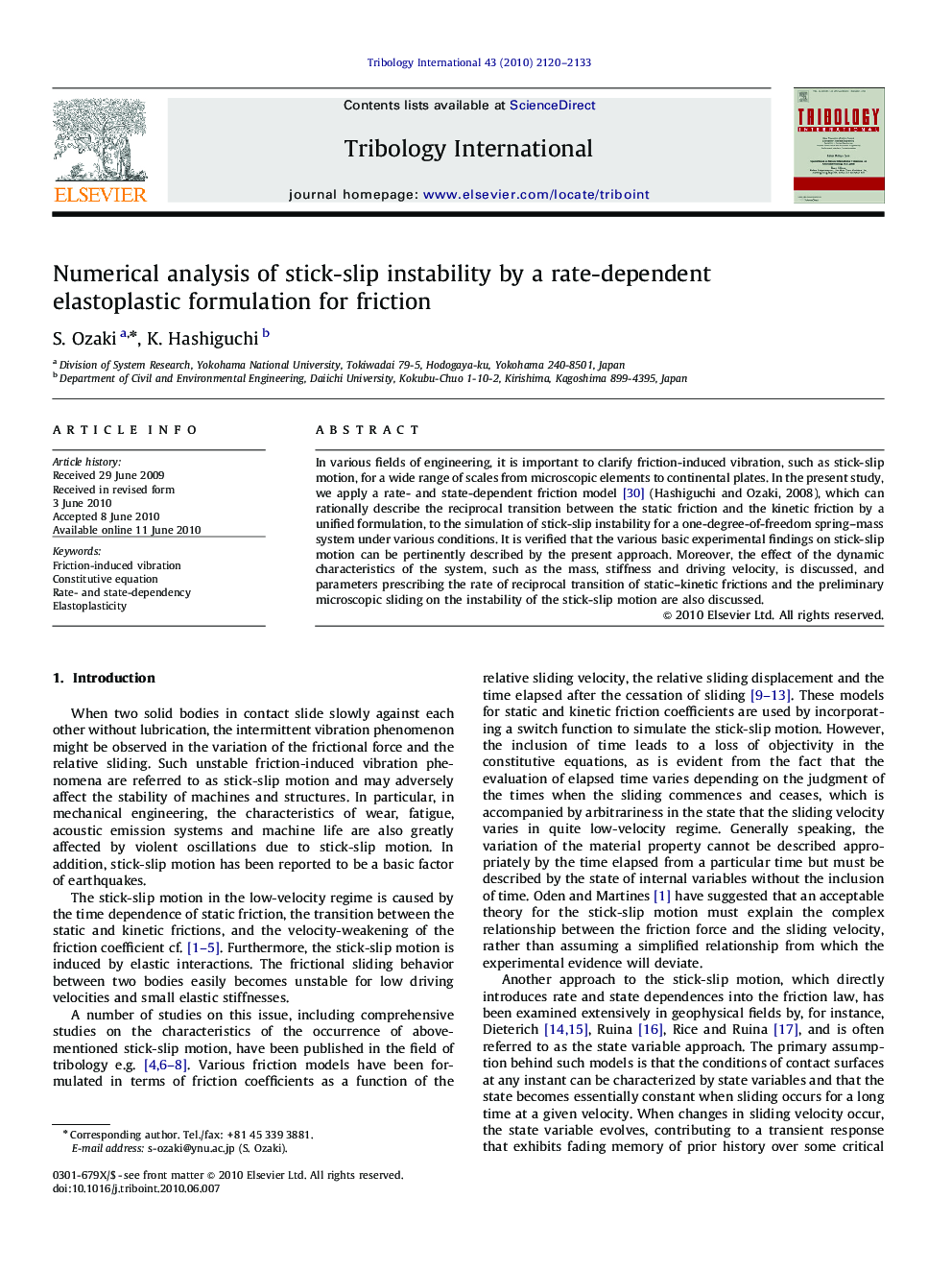| Article ID | Journal | Published Year | Pages | File Type |
|---|---|---|---|---|
| 615828 | Tribology International | 2010 | 14 Pages |
Abstract
In various fields of engineering, it is important to clarify friction-induced vibration, such as stick-slip motion, for a wide range of scales from microscopic elements to continental plates. In the present study, we apply a rate- and state-dependent friction model [30] (Hashiguchi and Ozaki, 2008), which can rationally describe the reciprocal transition between the static friction and the kinetic friction by a unified formulation, to the simulation of stick-slip instability for a one-degree-of-freedom spring-mass system under various conditions. It is verified that the various basic experimental findings on stick-slip motion can be pertinently described by the present approach. Moreover, the effect of the dynamic characteristics of the system, such as the mass, stiffness and driving velocity, is discussed, and parameters prescribing the rate of reciprocal transition of static-kinetic frictions and the preliminary microscopic sliding on the instability of the stick-slip motion are also discussed.
Related Topics
Physical Sciences and Engineering
Chemical Engineering
Colloid and Surface Chemistry
Authors
S. Ozaki, K. Hashiguchi,
